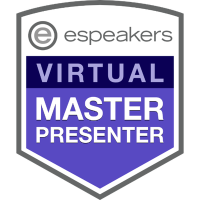|
Provide performance coaching for every employee. Performance coaching consists of feedback provided by a leader to a staff member on an ongoing basis. Effective coaching improves work quality and productivity, develops skills, increases confidence and enhances an employees’ overall work experience. Successful performance coaching typically includes three steps:
Next Post: January 20, 2014 – Creating a Climate for Diversity: Tip #12
0 Comments
Define the benefits you hope to achieve. Put another way, what do you have to gain by implementing your diversity program? It doesn’t make sense to proceed with any type of initiative if you have not clearly defined the benefits you hope to gain and the value it will provide for your organization. Unfortunately, this is exactly what many organizations do. They engage in a variety of activities without a clear sense of what they hope to achieve or how these activities will impact their bottom-line.
Generally speaking, the benefits accrued from diversity programs can be divided into three categories, which include improved individual and organizational performance (e.g., improved quality of the workforce, increased ability to attract and retain the best human resources, increased organizational competitiveness, improved public image), enhanced customer service (e.g., greater ability to connect with and satisfy an increasingly diverse customer base), and improved organizational bottom-line (e.g., increased organizational value/profitability, increased revenues, reduced costs associated with turnover, absenteeism and low productivity, and reduced complaints and litigation). Whatever you hope to achieve, be clear about it from the start. Next Post: October 21, 2013 – Getting Results from Your Diversity Program: Tip #2 Start an organizational diversity program. According to a 2010 study by the Society for Human Resource Management (Workplace Diversity Practices: How Has Diversity and Inclusion Changed Over Time), more than two-thirds of surveyed organizations engaged in some type of diversity practice. The most common activities include diversity recruitment efforts, diversity training, community outreach related to diversity, alignment of business goals with diversity issues, creating career development opportunities for a diverse array of employees, and collecting measurements/metrics on diversity-related activities. Most importantly, organizations that engage in activities such as these report a variety of significant outcomes including:
Next Post: October 13, 2013 – Creating a Climate for Diversity: The 10 Tips Actively work to recruit a high quality, culturally diverse workforce. This can create a significant competitive advantage for your organization. As a consultant, I have seen many organizations improve their performance and their ability to serve a diverse customer base by proactively focusing on the creation of high quality, culturally diverse candidate pools for their positions. By “enlarging the net” you use to recruit top candidates, and by improving the climate for diversity, you can significantly improve business performance.
Next Post: September 23, 2013 – Creating a Climate for Diversity: Tip #5 Help employees develop the skills they need to effectively communicate, resolve conflict and solve problems in culturally diverse environments. Such skills include the ability to communicate across cultural differences, the ability to resolve diversity-based conflict, the ability to provide coaching and mentoring for a diverse range of employees, and the ability to contribute to the creation of culturally empowered environments. Keep in mind that organizational members will not develop these skills overnight. However, with ongoing developmental opportunities and the chance to apply newly developed skills on the job, increased competency levels will become evident, and will have a positive impact on both individual and organizational performance. In addition, by providing continuous opportunities for development, you will demonstrate your commitment to the creation of a culturally inclusive workplace.
Next Post: September 16, 2013 – Creating a Climate for Diversity: Tip #3 In my last post, I defined empowering diversity as the intentional process of creating culturally empowered environments. There are 3 potential benefits to empowering diversity in your organization: improved individual and organizational performance, enhanced customer service and improved bottom-line.
Improved individual and organizational performance refers to measurable increases in employee productivity and work quality, enhanced team performance, improved organizational processes, and enhanced workforce quality. It also includes an increased ability on the part of the organization to recruit and retain the best human resources available. Enhanced customer service refers to an increased ability to connect with and successfully serve a diverse customer base. This can be reflected in improved sales in multicultural markets, reduced customer complaints, and increased market share. It also applies to internal customers, such as employees, and can be reflected in terms of improved attitude and morale. This is of particular importance in culturally diverse organizations, where there can be vast differences in employee perceptions and satisfaction levels. Finally, improved bottom-line refers to increased revenues, reduced costs, and enhanced organizational value and profitability. This can be reflected in a variety of organizational measures such as increased sales, stock value, and retention (especially among underrepresented group members), reduced cost-per-hire, and decreased turnover. It can also be reflected in a reduction in racial and sexual harassment, and associated legal costs. Next Post: September 9, 2013 – Creating a Climate for Diversity |
AuthorDr. Tyrone A. Holmes is an author, speaker, coach and consultant. He helps his clients develop the skills needed to communicate, resolve conflict, solve problems and improve performance in diverse organizational settings. Archives
March 2016
Categories
All
|
 RSS Feed
RSS Feed

